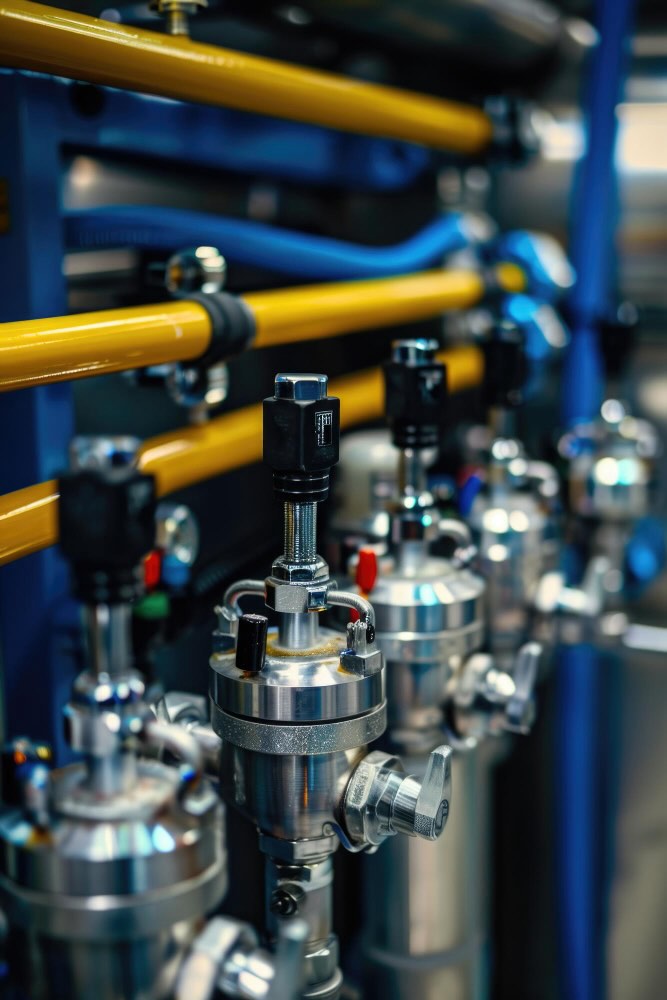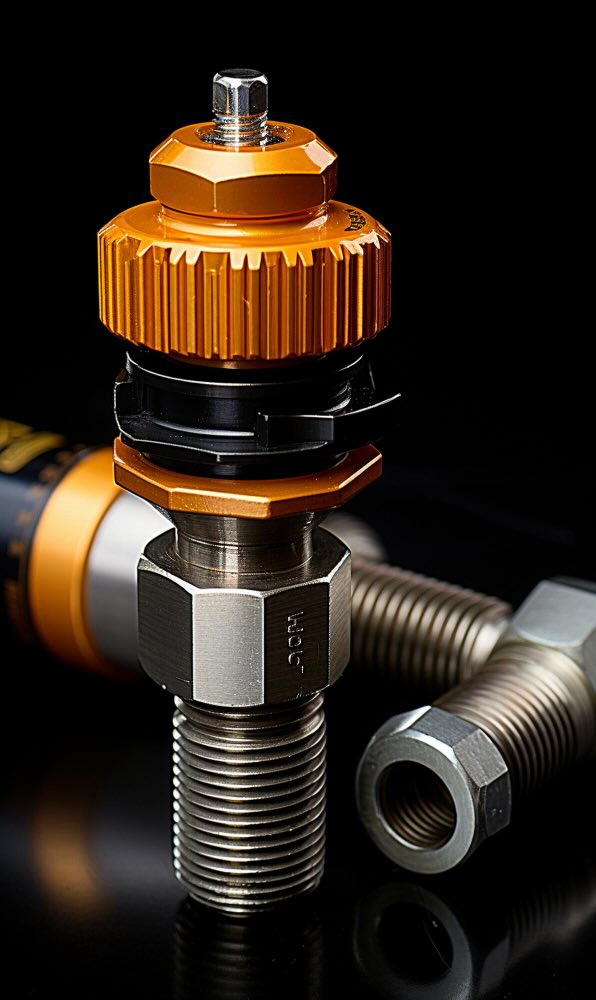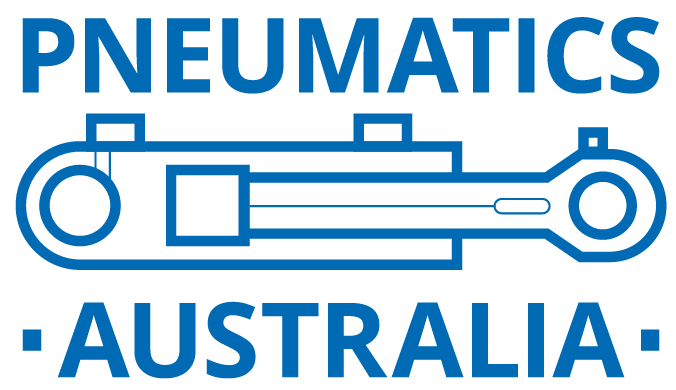Pneumatic Fittings (Australia) - Air Fittings for Connecting Your Automation Systems
The importance of pneumatic fittings in Australia cannot be overstated, particularly in the industrial automation sector. These small but mighty components are responsible for connecting various parts of a pneumatic system, allowing compressed air to flow efficiently and reliably.
However, selecting the right fittings for your specific application can be a daunting task, given the wide variety of options available in the market.
Pneumatics Australia understands the challenges businesses may face when it comes to finding the perfect fittings for their automation systems. With our extensive range of high-quality pneumatic fittings, we aim to simplify the selection process and provide you with the best possible solutions to meet your unique requirements.
Whether you need push-in fittings, threaded fittings, quick connect fittings, or any other type of fitting, we have you covered.
Pneumatic Fittings Ensure Leak-Free & Secure Connections
Pneumatic fittings are essential components that connect various elements of a pneumatic system, such as tubes, hoses, valves, and actuators. Their primary purpose is to facilitate the flow of compressed air or other gases while maintaining a leak-free and secure connection. Fittings come in a variety of shapes, sizes, materials, and connection types to cater to the diverse requirements of industrial automation applications.
The key components of a pneumatic fitting include the body, which is the main structure of the fitting, and the connection mechanism, which can be threaded, push-in, or compression-style. These components work together to create a robust and reliable connection that can withstand the pressures and demands of pneumatic systems.
One of the main advantages of using pneumatic fittings in automation systems is their ability to provide a modular and flexible approach to system design. With a wide range of fittings available, engineers can easily create, modify, and expand their pneumatic setups to suit changing requirements. Pneumatic fittings also offer excellent compatibility with various types of tubing and hoses, allowing for seamless integration with other components of the system.

Pneumatic Fittings Ensure Leak-Free & Secure Connections
Pneumatic fittings are essential components that connect various elements of a pneumatic system, such as tubes, hoses, valves, and actuators. Their primary purpose is to facilitate the flow of compressed air or other gases while maintaining a leak-free and secure connection. Fittings come in a variety of shapes, sizes, materials, and connection types to cater to the diverse requirements of industrial automation applications.
The key components of a pneumatic fitting include the body, which is the main structure of the fitting, and the connection mechanism, which can be threaded, push-in, or compression-style. These components work together to create a robust and reliable connection that can withstand the pressures and demands of pneumatic systems.
One of the main advantages of using pneumatic fittings in automation systems is their ability to provide a modular and flexible approach to system design. With a wide range of fittings available, engineers can easily create, modify, and expand their pneumatic setups to suit changing requirements. Pneumatic fittings also offer excellent compatibility with various types of tubing and hoses, allowing for seamless integration with other components of the system.

Factors to Consider When Choosing Pneumatic Fittings in Australia
Material Compatibility:
The material of the fitting must be compatible with the media being transported (compressed air, in most cases) and the environmental conditions in which the system operates. Common materials for pneumatic fittings include brass, stainless steel, plastic, and aluminium, each with its own advantages and limitations.
Pressure and Temperature Ratings:
Pneumatic fittings are designed to operate within specific pressure and temperature ranges. It is crucial to choose fittings that can withstand the maximum pressure and temperature expected in your system to prevent leaks, failures, and potential safety hazards.
Flow Requirements:
The size and design of the fitting can impact the flow rate of the media through the system. It is essential to select fittings with the appropriate internal diameter and flow characteristics to minimise pressure drops and ensure efficient operation of your pneumatic components.
Connection Types and Sizes:
Pneumatic fittings come in various connection types, such as threaded, push-in, and compression. The choice of connection type depends on factors such as the required pressure rating, ease of installation, and compatibility with other components. Additionally, fittings are available in different sizes to accommodate various tube and hose diameters.
Environment and Application-Specific Needs:
Consider the environment in which the fittings will be used, as well as any application-specific requirements. Factors such as exposure to chemicals, extreme temperatures, vibrations, and moisture can influence the choice of material and design of the fittings.
For example, stainless steel fittings are ideal for corrosive environments, while plastic fittings are suitable for applications requiring weight savings.
Through careful evaluation of the factors above, you can select the optimal pneumatic fittings for your automation system and ensure reliable performance, longevity, and cost-effectiveness.

Factors to Consider When Choosing Pneumatic Fittings in Australia
Material Compatibility:
The material of the fitting must be compatible with the media being transported (compressed air, in most cases) and the environmental conditions in which the system operates. Common materials for pneumatic fittings include brass, stainless steel, plastic, and aluminium, each with its own advantages and limitations.
Pressure and Temperature Ratings:
Pneumatic fittings are designed to operate within specific pressure and temperature ranges. It is crucial to choose fittings that can withstand the maximum pressure and temperature expected in your system to prevent leaks, failures, and potential safety hazards.
Flow Requirements:
The size and design of the fitting can impact the flow rate of the media through the system. It is essential to select fittings with the appropriate internal diameter and flow characteristics to minimise pressure drops and ensure efficient operation of your pneumatic components.
Connection Types and Sizes:
Pneumatic fittings come in various connection types, such as threaded, push-in, and compression. The choice of connection type depends on factors such as the required pressure rating, ease of installation, and compatibility with other components. Additionally, fittings are available in different sizes to accommodate various tube and hose diameters.
Environment and Application-Specific Needs:
Consider the environment in which the fittings will be used, as well as any application-specific requirements. Factors such as exposure to chemicals, extreme temperatures, vibrations, and moisture can influence the choice of material and design of the fittings. For example, stainless steel fittings are ideal for corrosive environments, while plastic fittings are suitable for applications requiring weight savings.
Through careful evaluation of the factors above, you can select the optimal pneumatic fittings for your automation system and ensure reliable performance, longevity, and cost-effectiveness.

Types of Pneumatic Fittings We Offer
We offer a comprehensive range of pneumatic fittings to cater to the diverse needs of our customers.
Push-In Fittings
Pneumatic push-in fittings provide a quick and easy way to connect tubes without the need for tools. They consist of a body with a collet or O-ring that grips the tube when inserted, creating a secure and leak-free connection.
Our push-in air fittings are available in two main versions:
Plastic (Technopolymer) Version:
TecnAir's plastic push-in fittings, available in metric and imperial sizes, offer high flow rates, secure locking, and compliance with RoHS and PED standards. They are compatible with most types of tubing, including, (but not limited to), polyurethane, nylon (PA6), Rilsan (PA11/12), and Teflon.
Metal (Nickel-Plated Brass) Version:
TecnAir's metal push-in fittings, made from nickel-plated brass, provide full flow in accordance with the internal diameter of the selected tube.
The double clamping security locking ring eliminates the risk of accidental tube disconnection, while the internal support ring minimises air leakage.
Threaded Fittings
Threaded fittings are a classic choice for pneumatic systems, offering a reliable and secure connection between components. They consist of a male and female thread that engages to create a tight seal.
We stock a wide range of threaded fittings in various sizes, materials, and configurations to suit different applications.
Quick-Disconnect Couplings
Pneumatic manifolds are compact, space-saving devices that allow for the distribution of compressed air to multiple points in a system. They consist of a block with multiple ports and internal passages that direct the flow of air to the desired locations.
Our manifolds can incorporate various functions, such as valves, regulators, gauges, and filters, to provide a complete control solution for your pneumatic system.
Manifolds
Manifolds provide a compact and efficient way to distribute compressed air to multiple branches in the system. They consist of a single inlet port and multiple outlet ports, which can be individually controlled using valves or regulators.
We offer a selection of manifolds in different sizes, materials, and configurations to suit your specific system layout and requirements.
Tubing / Hoses
Tubing and hoses are essential components in pneumatic systems, providing a means of transporting compressed air between various elements.
We offer a range of high-quality tubing and hoses in different materials, sizes, and colours to suit your specific requirements. Our selection includes:
- Polyurethane tubing - Flexible, durable, and resistant to abrasion and kinking
- Nylon tubing - Lightweight, strong, and suitable for high-pressure applications
- PVC tubing - Cost-effective and suitable for general-purpose applications
- Rubber hoses - Highly flexible and resistant to oil and abrasion
Compression Fittings
Compression fittings provide a secure and reliable connection for metal or plastic tubing in high-pressure applications. They consist of a body, a ferrule (or olive), and a nut that compresses the ferrule onto the tubing as the nut is tightened, creating a leak-free seal. We stock a variety of compression fittings for your unique needs, including olive fittings.
Olive Fittings
Univer's olive brass compression fittings, made from nickel-plated brass, are compatible with tubes made from copper alloy, brass, stainless steel, and plastic, offering versatile connection options for your pneumatic system.
Fittings With Pneumatic Functions
Univer's pneumatic fittings with functions offer additional capabilities beyond simple connection, such as flow regulation, quick exhaust, and miniature ball valves.
These fittings, made from high-quality technopolymer, provide reliable performance and precise control in various pneumatic circuits.
Stainless Steel Twin Ferrule Fittings
TecnAir twin ferrule stainless steel fittings are rigorously tested and manufactured to the highest quality standards, making them ideal for use in aggressive environments or in connection with corrosive fluids.
They are interchangeable with products from leading manufacturers such as Parker (A-Lok™), Hamlet (Let-Lok™), Hoke (Gyrolok™), and Swagelok™.
Machined Stainless Steel Pipe Fittings
TecnAir's high-pressure series of machined stainless steel pipe fittings are precision-engineered to ensure zero leakage under the most demanding high-pressure applications up to 200 bar.
Made from high-quality materials such as ASTM A-479, BS970 316-S31, and DIN 4401, these fittings provide excellent performance and corrosion resistance.
Soft Piping Fittings
Designed for flexible and hygienic applications, such as those found in food handling robots, our soft piping fittings made from thermoplastic materials like nylon provide a watertight seal on tubing using ferrules or simple barbed inserts.
These non-metallic fittings prevent contamination issues while allowing for movement and vibration, with transparent tubing aiding in line tracing for maintenance purposes.
Check Valves
Check valves are one-way flow control fittings that allow air passage in a single direction, preventing backflow. They are commonly used in pneumatic systems to sequence work motions, maximise air reserve efficiency, and protect sensitive components from damage.
We have a range of check valves in different sizes, materials, and configurations to suit your specific needs.
How to Install and Maintain Pneumatic Fittings
Proper installation and maintenance of pneumatic fittings are crucial for ensuring the optimal performance and longevity of your automation system. Here are some key tips to keep in mind:
Proper Installation Techniques
- Ensure that the fittings are compatible with the tubing or hose being used, in terms of size, material, and connection type
- Cut the tubing or hose squarely and cleanly, using a sharp blade or dedicated cutting tool
- Deburr the cut end of the tubing or hose to remove any sharp edges that could damage the fitting or cause leaks
- Insert the tubing or hose fully into the fitting, ensuring that it bottoms out against the stop or shoulder
- Tighten threaded fittings to the manufacturer's recommended torque value, using a calibrated torque wrench
- For push-to-connect fittings, push the tubing or hose firmly into the fitting until it clicks or locks into place
Leak Detection and Prevention
- Regularly inspect fittings and connections for signs of wear, damage, or leakage, such as hissing sounds, visible cracks, or bubbles in soapy water applied to the connection
- Use a leak detection spray or solution to pinpoint the exact location of any leaks
- Tighten or replace any leaking fittings as necessary, following the manufacturer's instructions
- Ensure that the system is depressurised before attempting any repairs or replacements
Regular Maintenance and Replacement
- Periodically check fittings for signs of corrosion, particularly in harsh or corrosive environments
- Replace any fittings that show signs of excessive wear, damage, or corrosion, even if they are not currently leaking
- Keep spare fittings on hand to minimise downtime in case of unexpected failures or maintenance needs
- Follow the manufacturer's recommended maintenance schedule and procedures for your specific fittings and system
With these installation and maintenance best practices, you can ensure that your pneumatic fittings provide reliable, leak-free performance for years to come, minimising costly downtime and repairs.
Common Applications of Pneumatic Fittings
Pneumatic fittings find use in a wide range of industries and applications, thanks to their versatility, reliability, and cost-effectiveness.
Some of the most common applications include:
Industrial Automation:
Pneumatic fittings are essential components in industrial automation systems, where they are used to connect and control the flow of compressed air to various actuators, valves, and other devices.
From assembly lines to packaging machines, pneumatic fittings enable the precise and reliable operation of automated equipment.
Food and Beverage Processing:
In the food and beverage industry, pneumatic fittings play a crucial role in the safe and hygienic handling of products.
Soft piping fittings made from food-grade materials, such as Teflon® or polypropylene, are commonly used in applications like filling, capping, and conveying, where cleanliness and contamination prevention are paramount.
Packaging Machinery:
Pneumatic fittings are widely used in packaging machinery, where they enable the rapid and precise movement of products, materials, and components.
From blister packing to shrink wrapping, pneumatic fittings provide the reliable and efficient air supply needed to keep packaging lines running smoothly.
Medical Equipment:
In the medical industry, pneumatic fittings are used in a variety of applications, from dental chairs to surgical tools.
The precise control and clean operation provided by pneumatic fittings make them ideal for use in sensitive medical environments, where reliability and safety are of the utmost importance.
Automotive Manufacturing:
Pneumatic fittings are extensively used in automotive manufacturing, from assembly lines to paint shops.
They enable the precise and reliable operation of tools, jigs, and fixtures, as well as the efficient handling and transportation of components throughout the production process.
Common Applications of Pneumatic Fittings
Pneumatic fittings find use in a wide range of industries and applications, thanks to their versatility, reliability, and cost-effectiveness.
Some of the most common applications include:
Industrial Automation:
Pneumatic fittings are essential components in industrial automation systems, where they are used to connect and control the flow of compressed air to various actuators, valves, and other devices.
From assembly lines to packaging machines, pneumatic fittings enable the precise and reliable operation of automated equipment.
Food and Beverage Processing:
In the food and beverage industry, pneumatic fittings play a crucial role in the safe and hygienic handling of products.
Soft piping fittings made from food-grade materials, such as Teflon® or polypropylene, are commonly used in applications like filling, capping, and conveying, where cleanliness and contamination prevention are paramount.
Packaging Machinery:
Pneumatic fittings are widely used in packaging machinery, where they enable the rapid and precise movement of products, materials, and components.
From blister packing to shrink wrapping, pneumatic fittings provide the reliable and efficient air supply needed to keep packaging lines running smoothly.
Medical Equipment:
In the medical industry, pneumatic fittings are used in a variety of applications, from dental chairs to surgical tools.
The precise control and clean operation provided by pneumatic fittings make them ideal for use in sensitive medical environments, where reliability and safety are of the utmost importance.
Automotive Manufacturing:
Pneumatic fittings are extensively used in automotive manufacturing, from assembly lines to paint shops.
They enable the precise and reliable operation of tools, jigs, and fixtures, as well as the efficient handling and transportation of components throughout the production process.
Contact Us for Additional Information
As industries continue to embrace automation, the role of pneumatic products in driving efficiency, precision, and productivity has never been more critical.
Pneumatics Australia is uniquely positioned to help you improve your operations, increase your profitability, and stay ahead of the competition. With our extensive range of premium components, expert support, and customised solutions, we enable your systems to operate with greater efficiency and reliability.
Contact us today to discuss your requirements and discover how our pneumatic solutions can take your business to the next level.
